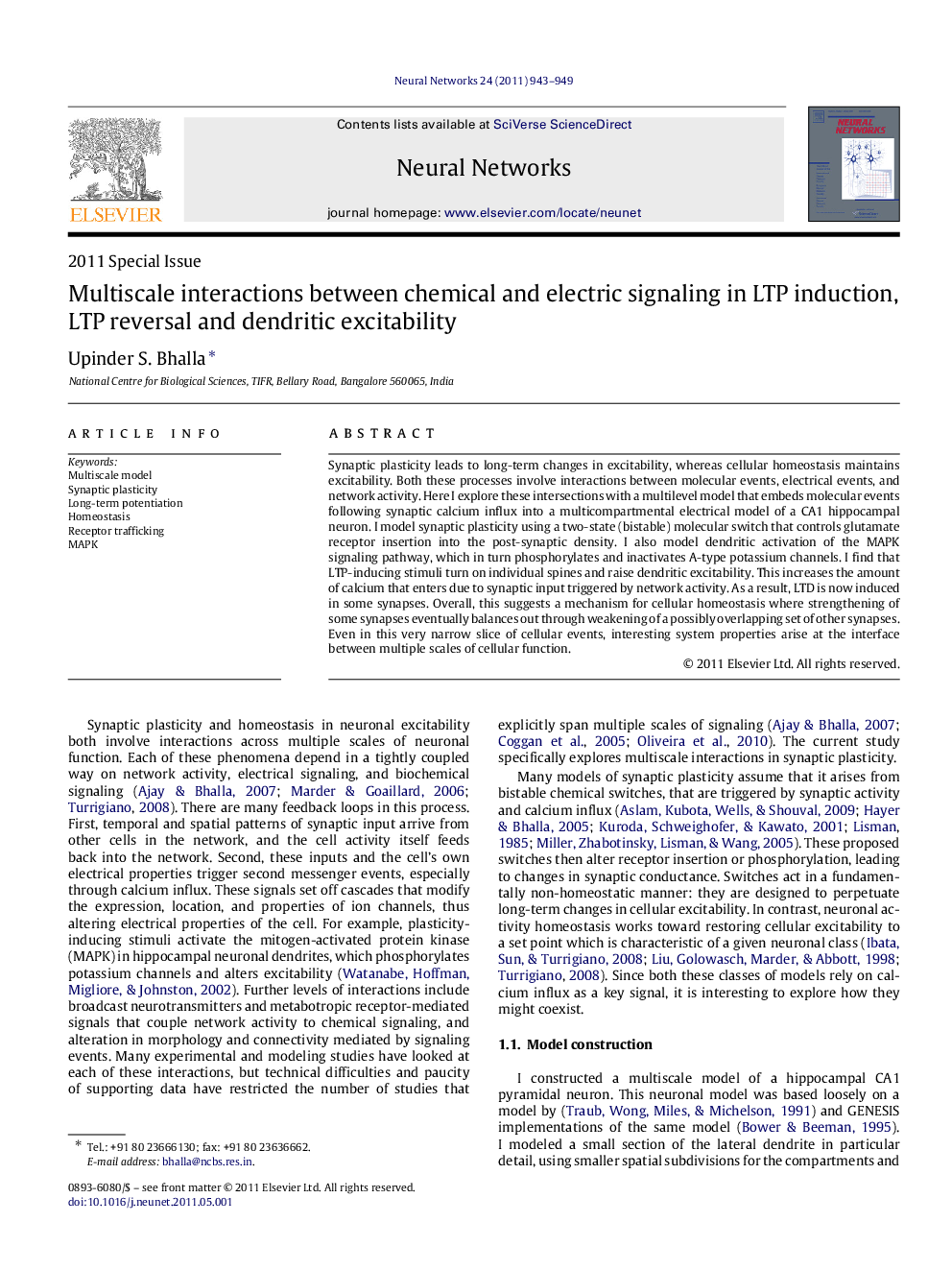| Article ID | Journal | Published Year | Pages | File Type |
|---|---|---|---|---|
| 406850 | Neural Networks | 2011 | 7 Pages |
Synaptic plasticity leads to long-term changes in excitability, whereas cellular homeostasis maintains excitability. Both these processes involve interactions between molecular events, electrical events, and network activity. Here I explore these intersections with a multilevel model that embeds molecular events following synaptic calcium influx into a multicompartmental electrical model of a CA1 hippocampal neuron. I model synaptic plasticity using a two-state (bistable) molecular switch that controls glutamate receptor insertion into the post-synaptic density. I also model dendritic activation of the MAPK signaling pathway, which in turn phosphorylates and inactivates A-type potassium channels. I find that LTP-inducing stimuli turn on individual spines and raise dendritic excitability. This increases the amount of calcium that enters due to synaptic input triggered by network activity. As a result, LTD is now induced in some synapses. Overall, this suggests a mechanism for cellular homeostasis where strengthening of some synapses eventually balances out through weakening of a possibly overlapping set of other synapses. Even in this very narrow slice of cellular events, interesting system properties arise at the interface between multiple scales of cellular function.
